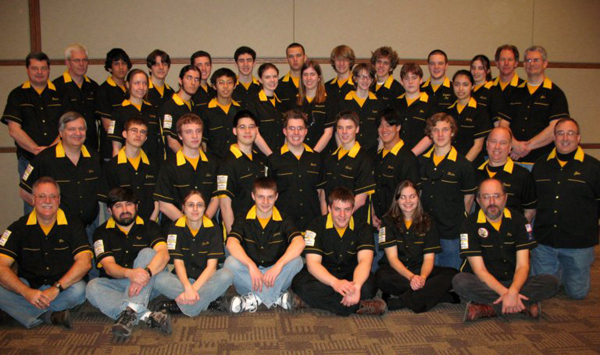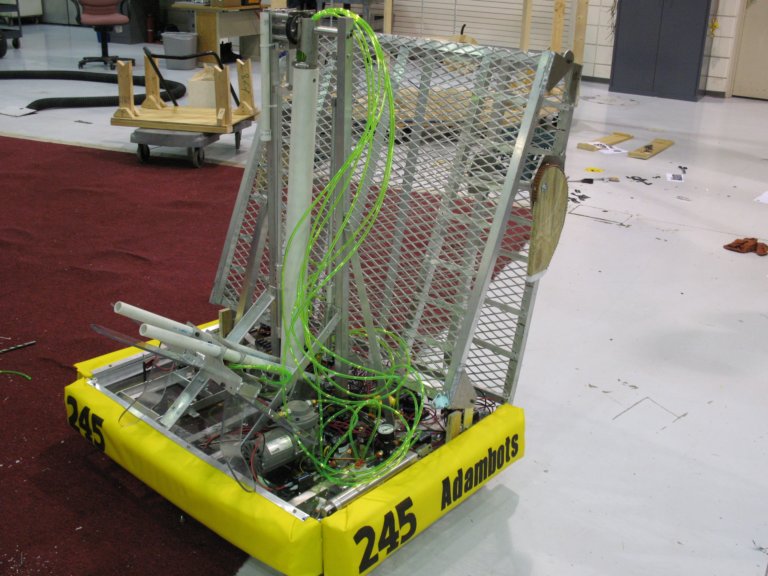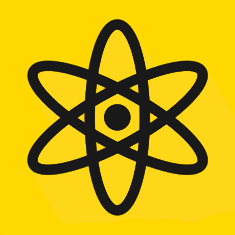2007: Rack ‘n Roll
Rack ‘n Roll pitted two alliances of three teams against one another. The main objective of each alliance was to place tubes onto the center rack.
The Field
Rack ‘n Roll was primarily dominated by the rack located at the center of field. The rack was a large metal contraption with three levels of bars and served as the primary way of scoring points. Sporting a total of eight arms in an octagonal manner, it was able to move and rotate starting at the beginning of the match, giving the match random possibilities.
Game Pieces
Rack ‘n Roll had game pieces that resembled a toroidal pool toy or a lifesaver. There were a total of three different types of styles for the toys: keepers, ringers, and spoilers. Keepers were classified as the tubes with letters which could only be picked up and put onto the racks during the autonomous mode. Ringers were undecorated tubes that had to be either delivered to the field by a human player or picked off from the floor. Spoilers were black and could be repositioned on the rack by a robot multiple times. Each team began with two spoilers.
Autonomous Period
Teams were able to pre-program their robot to perform certain functions and maneuvers without the control of the drivers. A robot during autonomous period had to be able to place keepers onto racks without the operation of the robot by a human. Other maneuvers could also be performed as long as they were within the rules of regulations of the game. Autonomous period lasted a total of 15 seconds.
Teleoperated Period
Teleoperated period followed right after the autonomous period. Any keepers not already on the rack could not be touched or picked up for scoring. During the teleoperated period, humans could take control of the robots and roam around the field as they wished. The robots had to pick up both ringers and spoilers and place them on the rack in attempt to gain points for their alliance. In the final 15 seconds of the teleoperated period, robots could not enter the opponent’s end zone. As with any FIRST game, robot positions during the end game portion of this period were awarded bonus points. The teleoperated period lasted a total of two minutes.
Scoring
Robots had to place different tubes on to the rack in the middle of the field. The main objective was to make rows and columns on the rack. A row or column of n amount of tubes will be calculated using 2n. For example, if a team placed four tubes in a column, the total for that column would be 24 or 16 points. Teams had access to a total of 21 different tubes; the maximum number of points possible during rack scoring was 596. During the last 15 seconds of the match, a team had the chance to score bonus points. If a robot was able to lift itself four or more inches from the ground without any of the field elements touching it, that robot won an additional 15 points. If a team was able to do that but 12 inches off of the ground, that robot won 30 bonus points. Since the robots were unable to touch any field elements, they had to rely on their alliance members to provide a lift.
Brief Recap
The Team:

The Robot:

The Competitions:
Florida Regional Orlando, FL
West Michigan Regional



